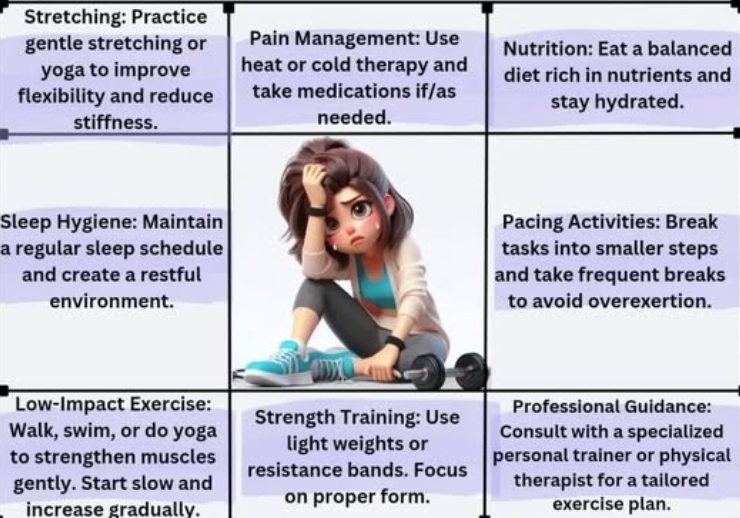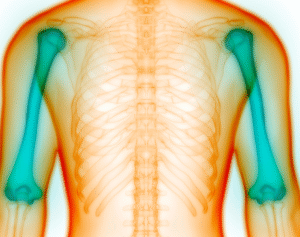What Is a Fibromyalgia Weakness and Why It Happens
What Is a Fibromyalgia Weakness? Understanding the Hidden Struggle
Fibromyalgia is a chronic pain condition that affects millions of individuals around the world. While most people associate it with widespread pain and fatigue, there is another critical yet often misunderstood symptom: weakness. When we ask, what is a fibromyalgia weakness, the answer lies in a complex interaction between the nervous system, muscles, and overall energy levels. Unlike traditional muscle weakness caused by damage or disease in the muscle tissue, fibromyalgia weakness is more elusive and rooted in the nervous system’s miscommunication.
Defining Fibromyalgia Weakness
Fibromyalgia weakness refers to a sensation of reduced strength, heaviness in the limbs, or difficulty initiating and sustaining muscle movements, even though there is no actual loss of muscle mass or physical damage. People with fibromyalgia may describe it as feeling drained, unable to lift their arms for long, or experiencing a sense that their legs will give out under them. These episodes can be frustrating, unpredictable, and severely limit one’s ability to perform daily tasks.
This type of weakness is functional rather than structural. It often stems from neurological fatigue and the overactive pain pathways that characterize fibromyalgia. The body remains capable, but the brain sends signals that make normal movement feel far more difficult than it should.
How Fibromyalgia Weakness Differs From Muscle Disease
In traditional neuromuscular disorders, muscle weakness is due to physical damage to the muscles or nerves. Tests such as MRIs, muscle biopsies, or electromyography often reveal the source. In fibromyalgia, these tests typically show no abnormalities, despite the patient feeling too weak to perform basic tasks. This leads to frustration for both patients and providers, as the symptoms are real but harder to validate with objective tools.
Importantly, fibromyalgia weakness can mimic true muscular diseases, which is why careful diagnosis is essential. Once other causes are ruled out, weakness is attributed to the complex symptom cluster of fibromyalgia itself.
The Role of Fatigue in Fibromyalgia Weakness
Fatigue is one of the most disabling symptoms of fibromyalgia and often contributes to the sensation of weakness. Unlike normal tiredness that resolves with rest, fibromyalgia fatigue is persistent and unrelenting. It affects both the body and mind, leading to slow movements, difficulty standing for extended periods, and muscle weariness even after light activities.
This chronic fatigue interferes with the body’s ability to recover energy, making muscles feel as though they are overworked even after minor exertion. As a result, individuals may feel physically weak, particularly at the end of the day or after engaging in even simple physical tasks like walking or climbing stairs.
Common Manifestations of Fibromyalgia Weakness
The symptoms of fibromyalgia weakness can vary between individuals but often include:
- Heaviness in the arms or legs
- Feeling like limbs are hard to control or coordinate
- Shaking or trembling with activity
- Needing to rest after short periods of movement
- Trouble holding objects for long periods
- A sensation that the muscles are not responding as expected
These symptoms can come and go unpredictably, making it difficult to plan daily routines or maintain consistent physical activity.
Neurological Origins of Weakness in Fibromyalgia
One of the core theories behind fibromyalgia weakness is that the brain’s pain and sensory processing centers are overactive. This heightened sensitivity can result in exaggerated responses to movement or stress, including the sensation of fatigue and muscle weakness. When the brain interprets normal muscle use as extreme effort, it can lead to both the perception and experience of weakness.
This theory is supported by research that shows abnormalities in how fibromyalgia patients process pain and sensory information. These changes affect muscle coordination and energy efficiency, contributing to the persistent feeling of weakness.
Impact on Daily Life
Living with fibromyalgia weakness can be deeply challenging. Tasks that others find simple—like grocery shopping, lifting a child, or walking a dog—can feel exhausting or impossible. Weakness contributes to the cycle of inactivity, reduced mobility, and increased pain that many fibromyalgia patients experience.
It also affects mental health. The inability to rely on one’s body can lead to feelings of frustration, embarrassment, and isolation. Many individuals report losing their sense of independence due to weakness and fatigue, which can also impact their relationships and social life.
Managing and Reducing Fibromyalgia Weakness
While there is no cure for fibromyalgia, certain strategies can help reduce the severity and frequency of weakness:
- Low-impact exercise: Activities such as swimming, tai chi, or walking can help maintain muscle tone without overwhelming the body.
- Pacing techniques: Alternating periods of activity and rest can prevent overexertion and help conserve energy.
- Nutritional support: A well-balanced diet rich in anti-inflammatory foods may improve energy levels.
- Cognitive-behavioral therapy: Mental health support can reduce the psychological toll and help patients develop coping strategies.
- Sleep optimization: Improving sleep hygiene is crucial, as non-restorative sleep exacerbates fatigue and weakness.
- Medications: While not specifically for weakness, some fibromyalgia treatments help reduce pain and fatigue, indirectly improving physical strength.
When to See a Doctor About Muscle Weakness
It is important to differentiate fibromyalgia-related weakness from other medical conditions. If weakness is sudden, one-sided, accompanied by numbness, or progressively worsening, it could signal a more serious issue. In such cases, a medical evaluation is necessary to rule out neurological or muscular diseases.
Conclusion
Fibromyalgia weakness is a legitimate and distressing symptom that affects both physical function and emotional well-being. It differs significantly from traditional muscle disorders because it originates in the nervous system rather than the muscle itself. While it can’t be measured with standard tests, it is a real and valid part of the fibromyalgia experience.
Understanding what fibromyalgia weakness is and recognizing its impact helps create a more compassionate approach to care. With the right management strategies and support, individuals can find ways to minimize its effects and regain a sense of control over their daily lives.



